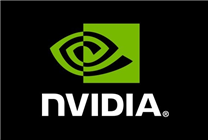AMD’s Future: Bold Innovations and Strategic Plans Unveiled
Key Takeaways:
- Zen 6 Architecture: AMD’s next-generation CPU architecture set to debut in 2026, utilizing advanced 2nm process technology.
- AI Enhancements: Upcoming processors will significantly boost artificial intelligence capabilities with increased IPC and new AI pipelines.
- Optimistic Financial Outlook: AMD anticipates a robust growth trajectory, projecting over $14 billion in combined revenue from client and gaming businesses by 2025.
In recent developments, AMD hosted its 2025 Financial Analyst Day, offering a comprehensive glimpse into the company’s future plans. While no new products were showcased at the event, insights regarding the upcoming technologies hinted at a promising roadmap for the semiconductor giant.
Zen 6 Architecture: A Game Changer
A standout feature of AMD’s roadmap is the upcoming Zen 6 architecture, set to launch in 2026. Transitioning to 2nm process technology, the Zen 6 architecture consists of two core types: the high-performance Zen 6 core and the efficiency-centric Zen 6c core. Both variants promise significant IPC (instructions per clock cycle) enhancements, allowing processors to execute a greater number of instructions at the same frequency, thereby dramatically improving overall performance.
While details are still emerging, it remains uncertain whether both core types will exclusively utilize 2nm technology. AMD may follow a strategy similar to previous generations, allocating the Zen 6 core to a 3nm process while the Zen 6c core shifts to 2nm.
AI-Driven Improvements
AMD has also indicated that the Zen 6 architecture will introduce support for multiple AI data types and expand AI processing capabilities through the addition of AI pipelines. This enhancement underscores AMD’s commitment to integrating artificial intelligence features across its product lines.
Several products based on the Zen 6 architecture are in the pipeline. The next-generation EPYC processor, codenamed "Venice," is expected to be the first to leverage this architecture and is anticipated to enter the market next year. Additionally, the desktop variant "Olympic Ridge" and the mobile "Medusa Point" processor are slated for release afterward, aiming to fulfill high consumer expectations.
Looking Ahead: Zen 7 Architecture
Though AMD’s plans for the Zen 7 architecture remain somewhat nebulous, it appears on the strategy map as “the next generation of real technological leaps.” Designed with future process nodes in mind, Zen 7 will introduce a new matrix engine alongside broader AI processing capabilities. Expectations suggest we won’t see processors based on this architecture until post-2028.
In the realm of AI PC processors, AMD has detailed the arrival of "Gorgon Point" next year, which represents a refreshed version of existing products. It will maintain the CPU foundation of Zen 5, leverage the GPU architecture of RDNA 3.5, and feature NPU innovations with XDNA 2. By 2027, the Medusa Point processor, utilizing the Zen 6 architecture, aims to achieve a tenfold increase in AI performance, marking a significant leap in the AI PC sector.
Robust Financial Insights
Market performance reports indicate that AMD has shown strong growth momentum. The company forecasts combined revenue from its client and gaming sectors to surpass $14 billion by 2025, reflecting a year-on-year increase exceeding 50%. AMD’s market share in client PC revenue has also expanded—from 15% in 2023 to roughly 28% this year—with ambitions to cross the 40% mark in the medium term.
Graphics Card Developments: A Cautious Approach
While the processor segment flourishes, AMD’s updates on graphics cards were limited. The upcoming RDNA 4 architecture product line did not receive specific details, with the focus primarily on enhancing AI and ray tracing performance.
Given the competitive landscape, AMD has strategically shifted its emphasis from high-end flagship models to catering to the mid-range mainstream market. This cautious approach indicates a calculated response to prevailing market conditions, balancing between innovation and consumer demand.
Conclusion: A Forward-Looking Strategy
In closing, AMD’s detailed plans for the future emphasize its robust innovative capabilities, particularly in the processor arena. The strategic rollout of the Zen 6 and Zen 7 architectures, coupled with advancements in AI PC technology, positions AMD favorably for upcoming market challenges.
Conversely, the graphics card sector presents a conundrum. As AMD navigates fierce competition, the company must prioritize finding new breakthroughs while stabilizing its standing.
By advancing its processor strategies and enhancing AI capabilities, AMD is poised to solidify its reputation as a leading force in the semiconductor industry, attracting both consumer interest and market confidence.






